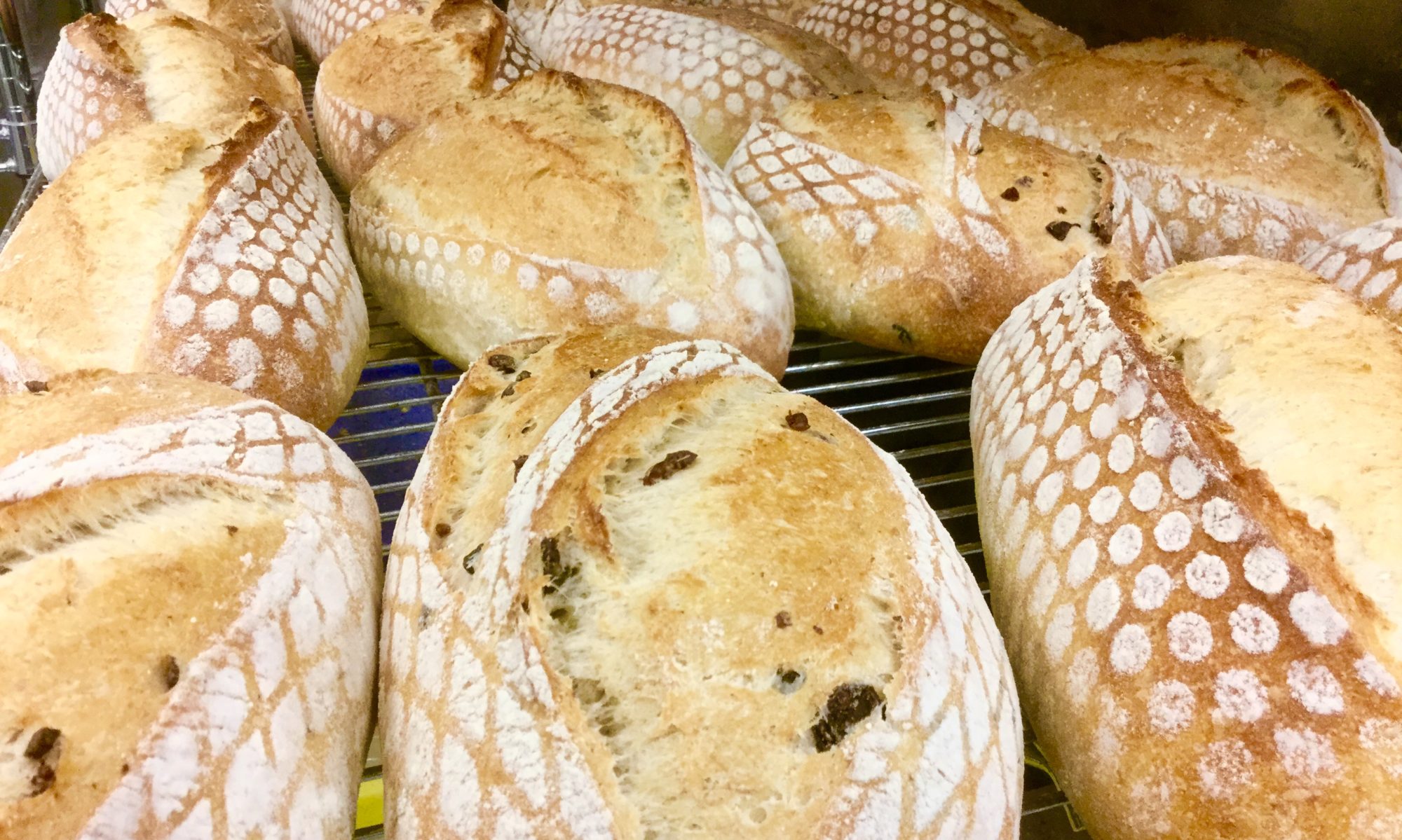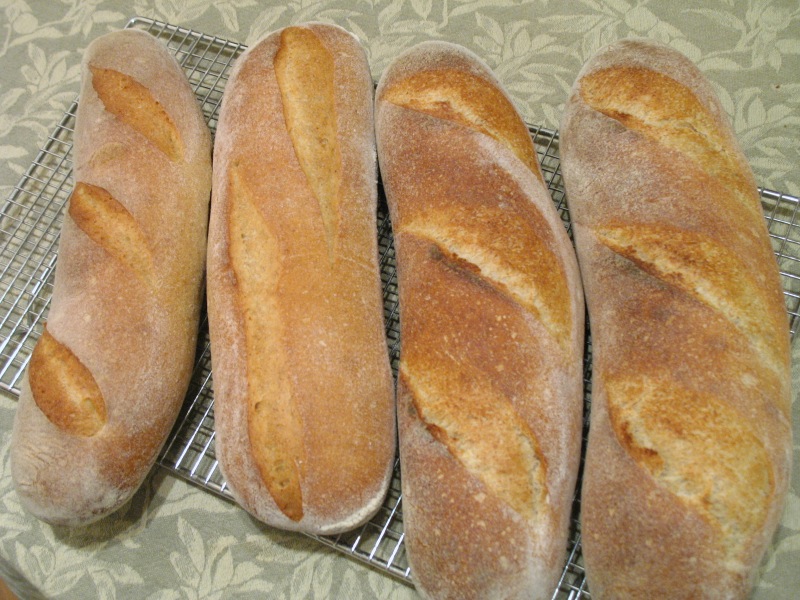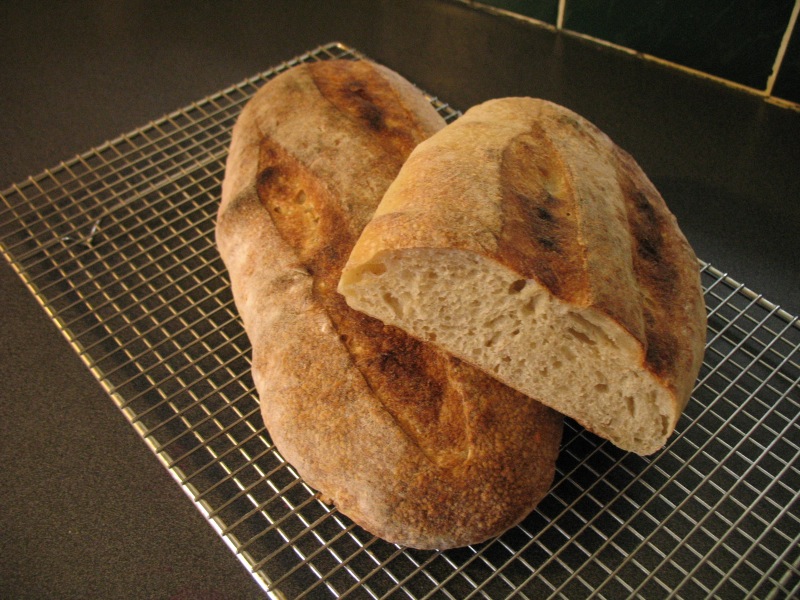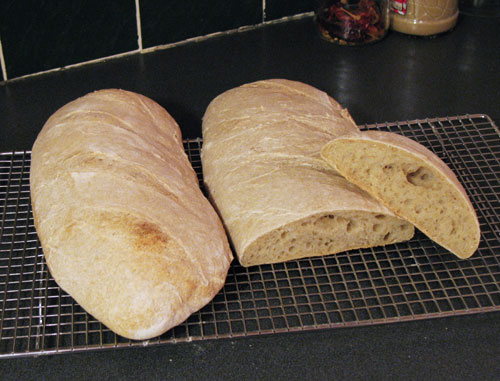So I’ve been pondering if my oven temp was WAYYY off what with recent pale loaves and little oven rise.
I at this very moment have THREE temperature gauges on the oven. The oven’s electronic/digital thermostat (who knows how “electronic” the actual switches to turn the heat on and off are) is set to 475ºF and this is what I want; of course once it’s set to that and the readout say it’s been reached, that’s precisely where it stays, even though we all KNOW oven temps go up and down a decent bit as the coil heats and turns off. I don’t particularly trust this temp gauge but it is what’s controlling the heater so I have to live with it.
However, I’ve also got a separate basic (and brand new) cheapy coil-type oven temp gauge hanging inside the oven and it’s telling me the oven is standing at about 435-450ºF. Finally, I have an electronic temp gauge, the type you stick into food, on a cord plugged into a battery powered digital reader, this one says the oven is hovering in the 513 – 526ºF range.
So now I’m wondering which of these temps, each varying from the other by 25 to 75º (cheapo oven thermometer to digital), I should presume is closer to accurate.
How DOES one measure an oven’s temp and be sure that what you’re getting is in fact true? I stuck the digital’s probe into boiling water, switched it to Celsius and it read exactly 100ºC, as expected. Can it be off by a lot when it gets up into the 450+F area or should I assume if it read water correctly, it is equally accurate at higher and lower temps?
I’m tired of making poopy bread loaves. Although the dogs like it plenty, I’d like to know that I’m doing things right and I can’t tell if anything in the bread making process (recipe, handling, proofing, etc.) is working well if my questionable oven temp will botch everything up whether the loaves themselves are fine or not.
Any one have words of guidance on this? How do you know if your thermometer is actually telling you the truth or a barefaced liar bent on watching you char your goods?
How in heck did they make bread before the invention of the oven thermometer?!?! I bet they used magic.
By the way, I made the bread using the Wild Yeast recipe (mentioned elsewhere) which makes 2kg of dough enough for four decent loaves, and decided to assume the temp was somewhere in between the three different reading, so I turned the oven down a few and hoped for the best. Well, it was closer, probably by a lot, to the higher 500+ temp and the bread kinda burnt. So the oven decided to go from a little too cool to a lot too hot. What the hell??!?
Well, the loaves were way over-browned anyway with some major black parts on the bottom that needed scraping/cutting off. So we ate one loaf in the next couple of hours. Gotta get rid of the evidence, right? The inside was quite yummy, the crumb very nice, the crust, well, rather hard and thick and over-toasted tasting. Sorry, dogs, you don’t get all mistake breads.
And sorry, I took no pics of the burnt offerings.
At least I’ve got the starter issue and the recipe issue under control now so that take two variables out of the “what the heck happened” equation. I still have rising issues to contend with, in that I need proper couche and/or baskets so I can avoid the dough sticking to makeshift towels and deflating badly.
But it’s starting to turn into separate, obvious sections that are now working well or causing problems and not whirling into one big giant “bread fail” mess. So things are certainly improving.
I’d still like to get a decent oven that heats at the temp – or even close to the temp – I set it at. No easy fix for that, unfortunately, short of winning even a small lottery.




